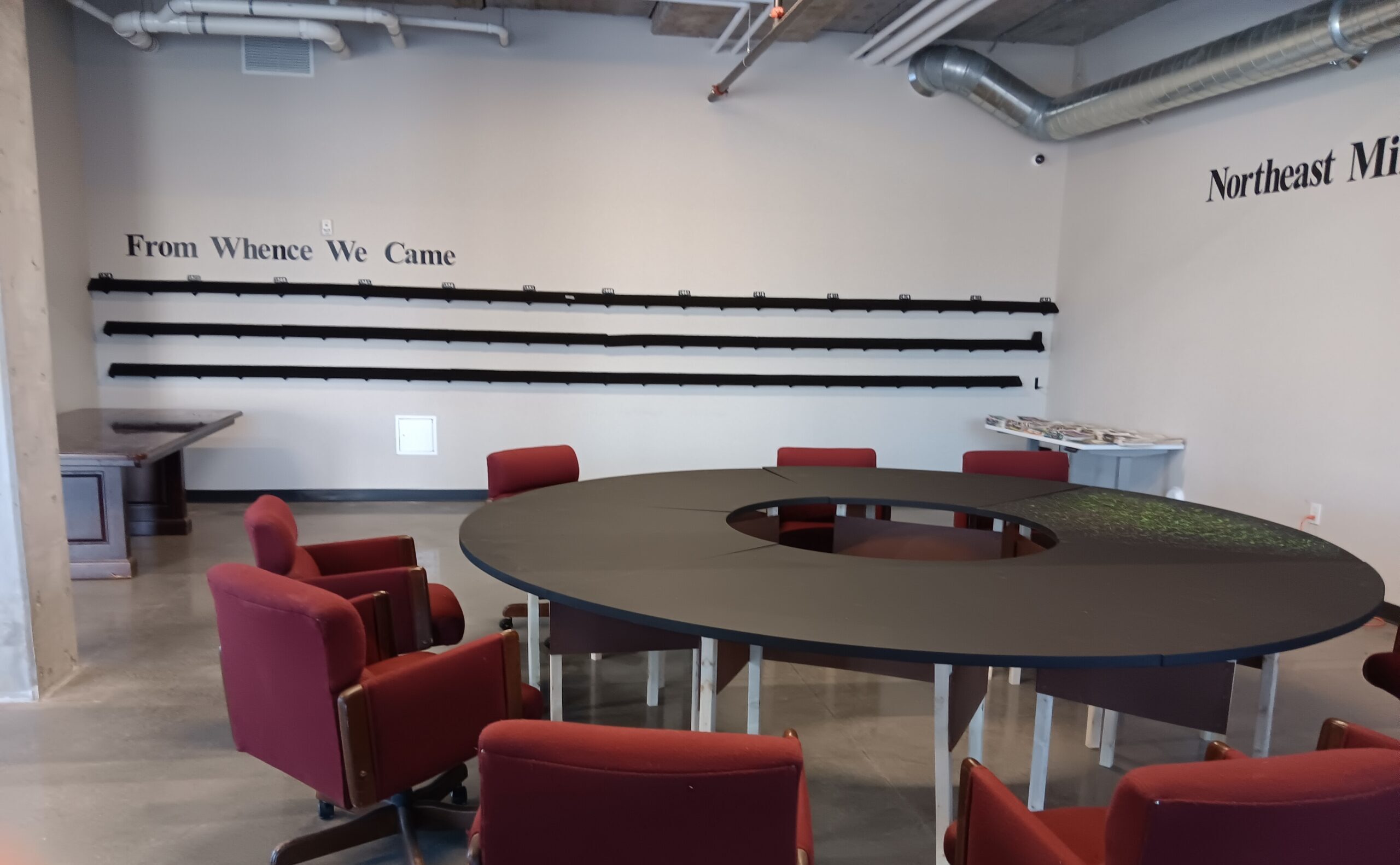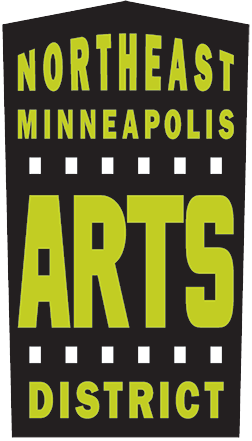There was good energy in the room at the first potluck gathering of the “Friends of the Welcome Center” on March 6, 2024. Taking place in the new Northeast Minneapolis Arts District space at Timber & Tie, the evening was a kick-off of sorts, the first time many there had gotten to hear in person about the vision of a larger Arts District project being designed. And with over a dozen people around the table, the discussion felt like a preview of the kind of roundtable magic the project is all about.

The informal gathering is the beginnings of what project leader Remo Campopiano hopes will be an evolving taskforce; an assemblage of invested minds willing to brainstorm and test ideas. As we have previously described in this publication, the central ambition of the project is to glean insights from the history of the visual arts in Minneapolis to empower the present and future arts ecosystem. One of the core vehicles of this historical inquiry will be to gather diverse, multi-generational leaders in the Minneapolis visual arts around the table to exchange stories, so that their shared perspectives can be catalogued and published.
Much of the evening was spent brainstorming topics for these roundtable discussions. The working list of topics expanded from three to more than ten. They included: the 1970’s Arts Commission origins; the impact of federal funding from the Comprehensive Employment and Training Act (CETA); the art-social hub at the New French Bar; the 1980’s downtown gallery district and its subsequent dispersal; the migration of many artists to Northeast Minneapolis; the ebb and flow of art writing & criticism; philanthropic funding for the arts; corporate art collections; underground art scenes over the years; public art over the years.

The appetite for documenting the history of the arts in Minneapolis is clear; the stories, even just among those present that evening, were abundant. But given the makeup of the group, mostly comprised of Campopiano’s peers from the 80s, much of the discussion also centered around the need for—and lack of—generational diversity at the table. Joyce Lyon of WARM urged the group to be cautions of assuming that “then was better” and “we need to get back to how things were before.” Instead, the goal is to understand the past, build upon what is working now, and imagine what else could be.
Of course, this is easier said than done. Campopiano acknowledged that the lack of generational, racial, and cultural diversity is, at the outset, the project’s greatest weakness. He is starting with who he knows, but he isn’t stopping there for minute. As a result of the first meeting, Layl McDill, a board member of Art to Change the World (ACW) is working to assemble a meeting with younger members of ACW interested in history; a partnership with a library could be another such avenue.
The space is a huge opportunity; many expressed how perfectly situated it is as a welcome center for the Arts District, but also as a gathering place for artists and leaders of all varieties.
At the end of the night, the group had opened more questions than they’d answered—but that seemed a fitting start. There was excitement for the forward-looking vision of the project; the group shared a feeling that this should not be an exercise in nostalgia, but a means of building a shared sense of heritage, identity, and energy for an empowered arts community long into the future.
In attendance: Joyce Lyon, Howard Christopherson, Jack Becker, Loren Niemi, Paul Ostrow, Josh Blanc, Layl McDill, Greg Volker, Christopher Harrison, Remo Campopiano, Katherine Boyce, Denny Sponsler, James Gregory, Ellen Elavsky.
